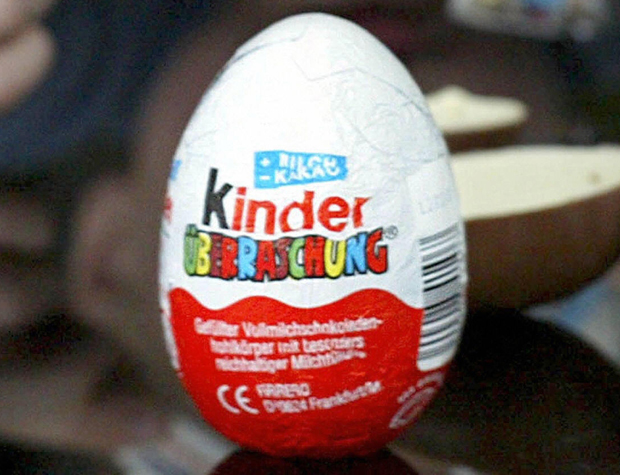Heading south to the United States for March Break? Leave the sandwiches behind.

Definitely don’t pack any Kinder Surprise chocolate eggs.
And whatever you do, don’t bring along anything Cuban.
These are just a few travel tips that Global News gleaned from a list of items seized by U.S. Customs and Border Protection at the Canada/U.S. land border in 2010.
The list, obtained through Freedom of Information legislation, provides a glimpse into some of the strange items that were not allowed into the U.S. – from abalone to zucchini.
Many things, such as weapons and narcotics, are obviously illegal. Others, such as food products and certain electronic equipment, require some explanation.
Listed below are some common or interesting categories of seized items, and why they were taken from travellers.
Food:
Many kinds of foods are routinely seized at the border. Some highlights from the list include things like “concealed kiwi” and “salami sandwich.”
According to the U.S. Customs and Border Protection website, prepared foods such as bakery items and some cheeses are usually admissible. Products containing meat generally are not.
Fruits and vegetables are a bit more questionable. A lot depends on where the fruit came from, and where exactly you’re going. Contaminated fruits and veggies can lead to outbreaks of disease or bring in alien insects, so American authorities are cautious about what comes in.

Get breaking National news
Kinder Surprise eggs:
The chocolate eggs with a plastic toy inside are popular treats in Canada. But, they’re actually illegal to import into the United States. According to U.S. Customs and Border Protection, nearly 25,000 Kinder Eggs were seized in the fiscal year 2010, in 1700 incidents. 41 incidents appear in our land border data.
Kinder Surprise are banned because of their unique combination of chocolate and plastic. The U.S. Food and Drug Administration has issued an import alert because the “imbedded non-nutritive objects in these confectionary products may pose a public health risk as the consumer may unknowingly choke on the object.”
Drug paraphernalia:
No drug paraphernalia is permitted to enter the United States, unless it is for a medical condition such as diabetes. It will be seized, and you may be subject to a fine or imprisonment. So leave your “glass pipe shaped like a dragon” (actually on the list) and your rolling papers at home. One note – it makes no difference whether or not the item has actually been used to consume drugs.
Cuban items:
The United States prohibits the importation of anything from Cuba, and a lot of it is seized at the American border. There are exceptions, for example for books, magazines and some household effects.
Items like “Cuban oven mitt” and “Pink scarf with “Cuba” in white” appear on our list.
Similar restrictions are in place for items from Iran, Burma and most of Sudan.
HDMI cables:
There were 24 seizures of HDMI cables, splitters and extenders at the Northern Land Border in 2010. According to a spokesperson from U.S. Customs and Border Protection, most of the HDMI cables were seized because of intellectual property rights violations, meaning that these particular items were counterfeit in some way.
Counterfeit consumer electronics accounted for 22 per cent of intellectual property rights-violating seizures by value in 2011, beating out counterfeit shoes for the first time.
Below, we’ve posted the list of items seized by U.S. Customs and Border Protection at the Northern Land Border in 2010. Because of the very brief, often ridiculous, descriptions used, it makes for an entertaining read – if totally out of context.
Scroll through and find your favourite item.
Some that made us chuckle: “Anchorage hotel key room number 11”, “concealed kiwi”, “Cuban oven mitt”, “hornets”, “one unidentified skull”, “Press N Play Farmyard Fun” and “Wine by Joe.”
SOUND OFF: Tell us your customs experiences.








Comments